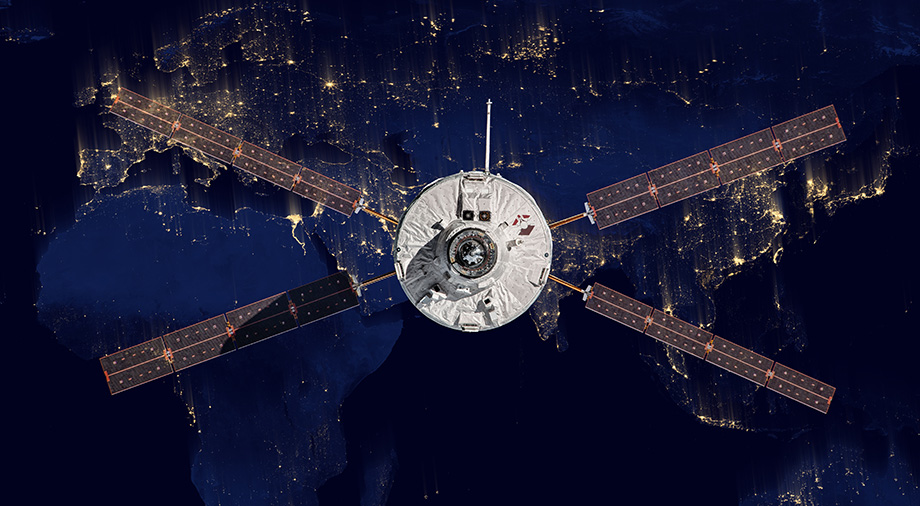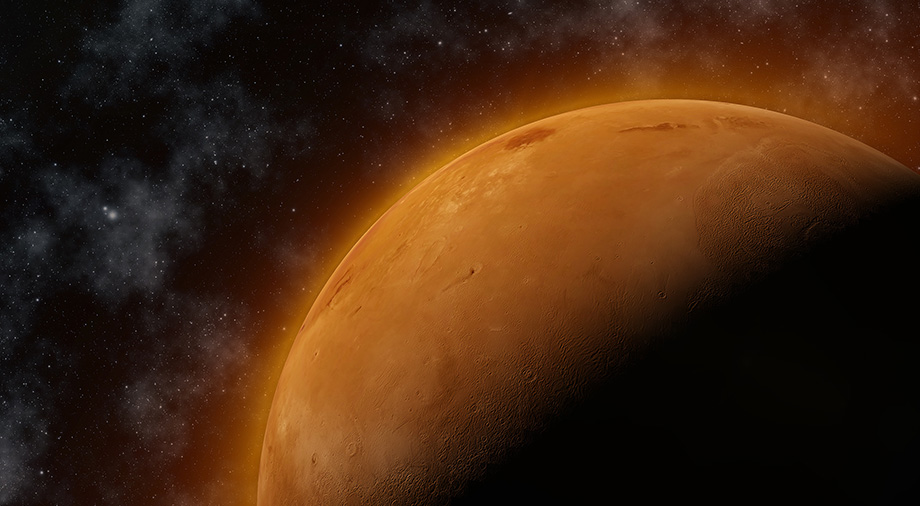In the two previous installments of this series, we recounted the history of humanity’s study of the Red Planet – from the very first missions at the beginning of the space age to the present. Today we will talk about future Martian explorers.
Searching for traces of Martian life
Without exaggeration, Mars can now be called the most studied planet in the solar system, (after Earth, of course). There are seven spacecraft operating in orbit around it, while the surface has two rovers and a helicopter. These probes, as well as previous missions, have collected a huge amount of data that has allowed scientists to shed light on the history of the Red Planet.
We know that in the distant past, Mars had an atmosphere much denser than the one it has now. It also had its own magnetic field, as well as both permanent water reservoirs and streams of water flowing on the surface. Then something happened. Mars lost its global magnetic field and over the next billions of years, most of its atmosphere and water escaped into space. But even now, under the surface of many regions of the planet, large deposits of water ice remain hidden from bygone times. And a couple of years ago, the Mars Express probe received data indicating that there may be layers of liquid water under the planet’s poles (although in fairness, not all planetary scientists agree with this interpretation).

Of course, the exact nature of the climate of ancient Mars will remain a matter of debate for a long time. In any case, it is obvious that it used to be much more hospitable than it is today. Thus, even if Mars is uninhabited now, some kind of life could actually have arisen and existed there a long time ago.
The search for answers to the question of the Red Planet’s habitability would be the main driving force of one of the most ambitious Mars missions, called ExoMars. As part of the mission, the European Space Agency (ESA) plans to land the Rosalind Franklin rover on Mars in order to detect compounds that could be left behind by living organisms. To do this, the device will be equipped with a unique drill capable of extracting rock samples from a depth of up to 2 m, as well as its own biological laboratory to perform chemical analyses.
Unfortunately, ESA made a strategic mistake by partnering with Russia, which would nearly become fatal for the project. Russia was supposed to provide a launch vehicle and radioisotope heaters for the rover itself, as well as building a descent platform.
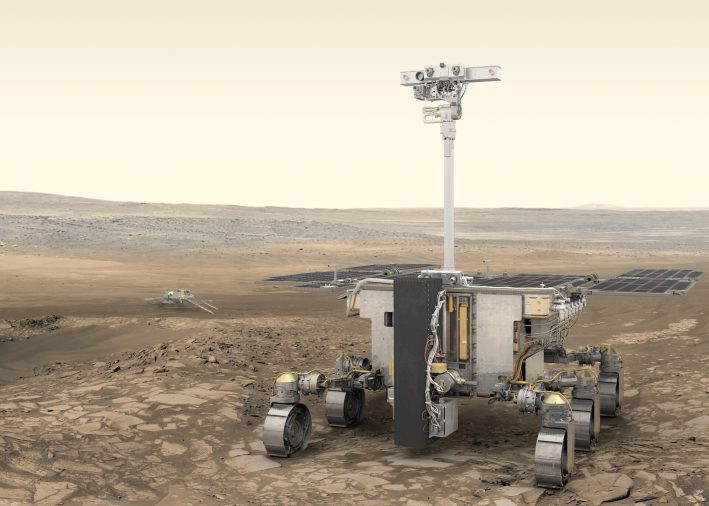
Photo: ESA
The full-scale Russian invasion of Ukraine put an end to these plans. In protest, ESA completely broke off cooperation with the aggressor country. As for ExoMars, it was decided to continue the project without Russian participation, and replace all components provided by them, including the descent platform, with European ones.
As a result, the position of the ExoMars mission became quite complicated. However, ESA intends to follow through on its plans and still send the rover to Mars. NASA can help him with this, which is quite ironic in its own way. The fact is that the American aerospace agency was initially a participant in the project, but later dropped out due to lack of finances, which, in fact, prompted the Europeans to turn to the Russians for help. The Americans now have a chance to make up for their previous shortcomings. NASA and ESA are negotiating to resume cooperation and jointly carry out the project. ExoMars is currently scheduled to launch in 2028.
The mystery of the origin of Phobos
ExoMars is far from the only mission that will go to Mars this decade. Next year, India also plans to equip a new device to Mars. The Mars Orbiter Mission 2 (MOM 2) will enter into orbit around the planet to study its atmosphere and how it interacts with the solar wind.
Research of the Martian atmosphere is also the main task for the EscaPADE pair of probes, which are being built by Rocket Lab under a contract awarded by NASA during the SIMPLEX program. They will go into an elongated orbit around the planet and study how the solar wind affects it. The results of the mission are intended to help scientists learn more about how Mars lost most of its atmosphere and water reserves and turned into the lifeless world we are familiar with.
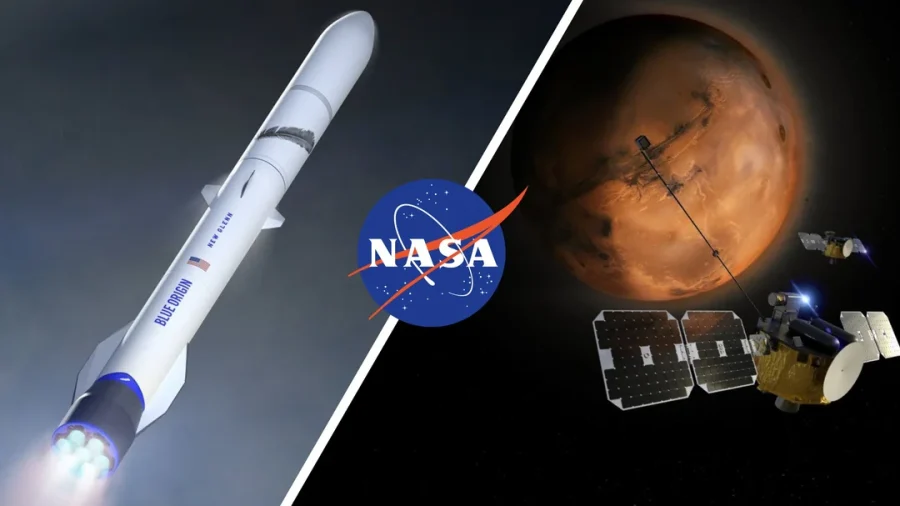
Photo: tlpnetwork.com
EscaPADE is currently scheduled to launch in August 2024. However, since the mission is planned to use the New Glenn rocket, which is still in development and has never flown, it is quite likely that it will be moved to the next ballistic window, which opens in late 2026.
But still the most interesting short-range Mars mission is the Japanese Martian Moons eXploration (MMX). Through it, JAXA will try to accomplish what Phobos-Grunt failed to achieve — delivering a sample of material from Mars’s largest moon back to Earth.
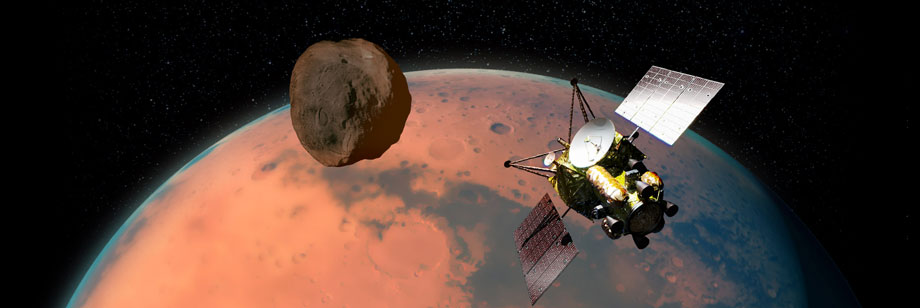
Image: JAXA
The origin of Mars’s moons has long been of interest to astronomers. They were once thought to be asteroids captured by the planet. Astronomers assumed this was due to their irregular shape and the fact that their surface spectrum is similar to that of many objects in the asteroid belt.
However, over time, a great deal of data has accumulated indicating that the Martian moons are in fact unlikely to be captured bodies. The most popular theory now is the so-called impact hypothesis, according to which Phobos and Deimos were formed in Martian orbit from material knocked out from the planet’s surface as a result of an impact by a large asteroid. To find out whether this is true or not, a detailed chemical and radioisotope analysis of their substance is required. This is exactly what MMX will do.
Upon reaching Mars, MMX will perform a series of close flybys of Phobos and conduct a detailed mapping of its surface. When specialists select a suitable site, the most important stage of the mission will begin: the device will land on the moon’s surface and take a sample of at least ten grams of its soil. Afterwards, it will set a course back to Earth.
In addition to taking a soil sample, MMX will drop a small French-German micro rover on Phobos, similar to the MASCOT vehicle that the Hayabusa 2 mission landed on the asteroid Ryugu. Unlike its predecessor, the new rover will receive energy from solar panels, rather from a non-rechargeable battery. Experts hope that this will allow the probe to work on the surface of Phobos for up to three months.
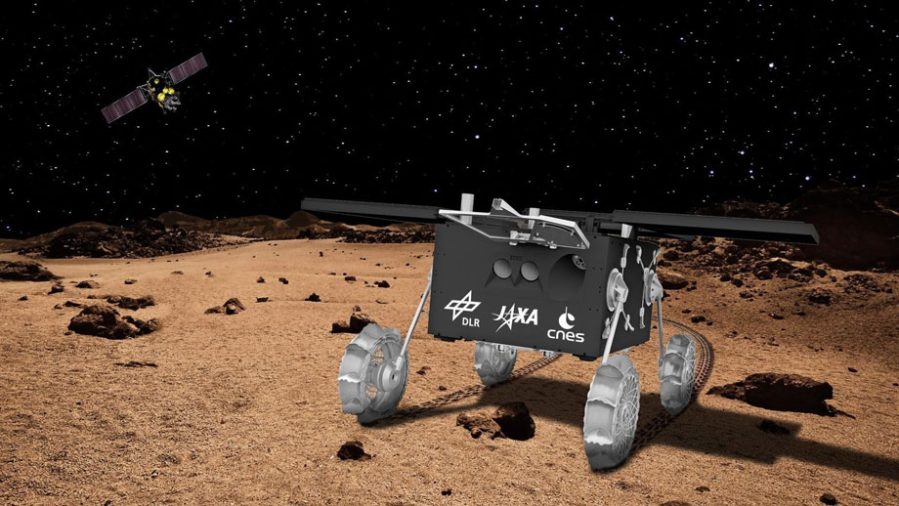
Image: DLR
If everything goes as planned, MMX will be launched in 2024. The soil sample will be taken in 2025 and delivered to Earth in 2029.
Delivery of a Martian soil sample
The MMX mission will be a prelude to the real “heavy artillery” in the form of two projects involving the delivery to Earth of soil samples from Mars itself. One is being developed by NASA and ESA, and the other by China.
During the American-European mission, known as Mars Sample Return, two devices will be launched to the planet: the Mars Ascent Vehicle (MAV), which is being developed by NASA, and the Earth Return Orbiter (DEVICE) created by ESA. The first will deliver a combination of a descent module and an ascent module to the Martian surface, while the second will remain in orbit around the planet.
According to the current mission plan, after the MAV lands, the Perseverance rover will approach it and load capsules containing Martian soil samples onto the ascent module (the rover has a total of 43 such containers). If Perseverance becomes incapable of movement at this point, a backup plan will be activated involving two helicopter drones picking up and delivering capsules from a sample backup storage to the MAV. The storage facility has already been created, and it contains ten sealed capsules that Perseverance unloaded onto an area on the Martian surface.
After loading the capsules, the MAV will launch from the surface of Mars, dock with the ERO, and transfer containers with soil. Next, the European apparatus will take a reverse course towards our planet. The ERO’s launch is planned for the fall of 2027, while MAV is scheduled for the summer of 2028. If the outcome is good, samples of Martian soil will be delivered to Earth in 2033.
The Chinese project called Tianwen-3 has a similar framework, which involves the launch of two automatic stations to Mars – a landing and a return one. The first will deploy a lander, which will take a soil sample, and then take off, delivering a capsule with samples into orbit. This probe will then dock with the return station, after which it will rush back to Earth. At the moment, the launch of Tianwen-3 is scheduled for 2028, and the delivery of soil samples is set to take place in 2033.
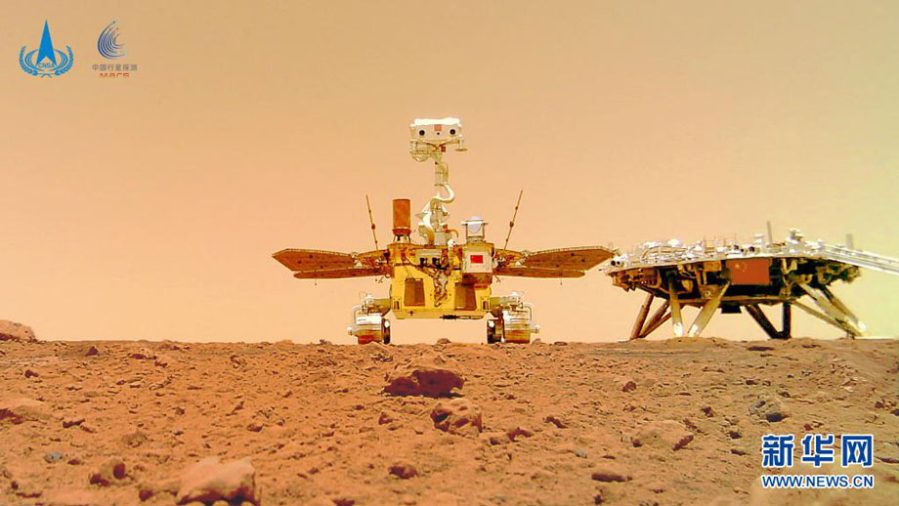
Photo: news.cn
From a technical point of view, the Chinese project is somewhat simpler than its competitor, because it does not involve the use of a separate rover for collecting samples. On the other hand, if successful, Mars Sample Return will bring back to Earth a very impressive collection of samples with potentially enormous scientific value.
Currently, both projects are in the development stage. Given the enormity of the task at hand, it is now quite difficult to predict the likelihood of their success. MSR is particularly at risk. NASA recently published a report prepared by an independent commission that examined the progress of the project. The auditors criticized it, arguing that with the current level of funding, the launch of devices ERO and MAV on schedule in 2027 and 2028 is virtually impossible.
The mission’s planned budget is also clearly insufficient for its implementation. According to experts, the total costs of the project will range from $8 billion to $11 billion. For comparison, just a few years ago the cost of its implementation was estimated at $4–4.5 billion.
All this, to put it mildly, is not very good news for NASA, whose budget, instead receiving promised increases, was actually frozen at last year’s level. However, given the enormous scientific value of the project, one can only hope that NASA will be able to find a solution and still bring it to completion.
Prospects for a manned mission to Mars
If one of these missions actually manages to deliver a sample of Martian soil to Earth and traces of ancient organisms are found in it, this will certainly cause a huge surge in interest in Mars. Perhaps it will finally encourage the leading space powers to organize a manned expedition to the Red Planet.
The idea of flight to Mars has long turned into a kind of Holy Grail of modern astronautics – something talked about very often, but never pursued beyond general discussions. Why this happens is not difficult to understand. We will not list the numerous technical problems that engineers will need to solve, as it is far beyond the scope of this article. We will simply state that a manned flight to Mars is a very difficult, extremely expensive and a rather dangerous undertaking. This is why no country on Earth currently has any official program to send people to the Red Planet.

In order for the status quo to change, some very weighty arguments are needed. One of them may be geopolitical considerations. In the end, it is no secret that the landing of people on the Moon was primarily dictated not by scientific necessity, but by the desire of the superpowers to demonstrate the advantages of their system to the whole world. And despite the fact that more and more experts indicate that the current situation on the planet is beginning to resemble a repeat of the Cold War era, the main space efforts of China and the United States are concentrated on the Moon. It is still difficult to imagine that the situation could suddenly change so radically that the two countries would dramatically switch the focus of their manned space programs to Mars.
This is why many scientists have such high hopes for the delivery of Martian soil samples. The discovery of traces of extraterrestrial life would be the most important discovery in the entire history of mankind and would give enormous impetus to projects for a manned Mars mission. Automated robots, of course, can do a lot. But according to an apt saying, a professional geologist with a hammer will collect more interesting samples in a day than a state-of-the-art Mars rover will collect during its entire operation. This geologist just needs to be brought to Mars somehow.
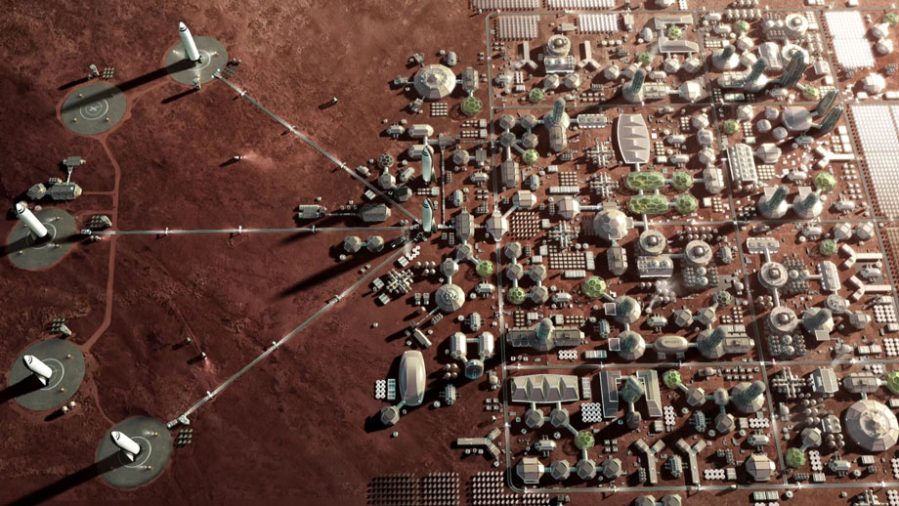
Photo: SpaceX
Of course, there is also the SpaceX factor, which began with Elon Musk’s beautiful dream of delivering a greenhouse of earthly plants to Mars. The problem is that the current Musk and the Musk of twenty years ago are like two different people. There is a strong feeling that now the billionaire is much more interested in spending most of his time and money supporting far-right movements and the election campaign of Donald Trump, rather than doing what could really change the world for the better.
However, SpaceX itself is developing quite successfully, as the company developed a near monopoly on the international market for delivering cargo into orbit, and the second test of Starship showed clear progress in the construction of a super-heavy carrier. And although Starship alone will still not be able to transport people to Mars, it can significantly simplify the task of exploring the Red Planet, for example, by helping to implement the mission to return Martian soil to Earth. Thus, it is perhaps this rocket that will become the factor that will set off a chain of events that results in humans traveling to Mars and leaving their traces in its dust.


